Retire While You Work® Podcast
Join us as we discuss various topics to help you find the path to viewing money as a means to the true currency, TIME, and learn how to build more memories and experiences.
View All EpisodesJoin us as we discuss various topics to help you find the path to viewing money as a means to the true currency, TIME, and learn how to build more memories and experiences.
View All Episodes
What if you could do what you're passionate about and achieve a work-life balance? What if you were relieved of the pressure to have some massive amount saved?
Learn More
When saving for retirement, or another future goal, consider using dollar-cost averaging as a strategy – the process of making regular investments on an ongoing basis, regardless of price; for example, buy 100 shares of a mutual fund each month, quarter or year. You are buying more shares of a security when its share price is low, and fewer shares when its price is high. Over time, it’s likely the average cost per share will be lower than the average market price. For many, this is the most realistic way to save toward retirement because these periodic investments come from paycheck as opposed to having a lump-sum of money to invest all at once.
Market
Fluctuation or volatility in the performance of financial markets. How and where your assets are allocated across different asset classes plays a key role in managing market risk.
Inflation
Costs of goods and services increase over time. Your cost of living at retirement might be higher than it is now, as inflation erodes the value of your savings and reduces your purchasing power over time.
Longevity
Longer life expectancies mean the assets you save toward retirement will need to last longer. As you determine your savings goals, consider you may need your assets to generate income throughout a 20- to 30- year retirement.
Diversifying your savings among several asset types may enable you to take advantage of growth potential in different sectors and various financial markets. You may want to avoid placing your retirement savings in one type of asset, so to balance performance in times of market fluctuation. Also consider dollar-cost averaging which is the process of making regular investments on an ongoing basis, regardless of price. This can make the average cost of your investments lower than the average market price over time. Although dollar-cost averaging may not mitigate market, inflation, and longevity risks, it typically offsets their impact on the value of your investments.
Contact us for more information on Nashville retirement planning and how we can work together to manage these risks by applying a comprehensive process to plan for your retirement.
Diversification and Dollar cost averaging do not assure a profit and does not protect against loss. Dollar cost averaging involves continuous investment regardless of fluctuating price levels of such securities. Investors should consider their financial ability to continue purchases through periods of low price levels.
Whether you’re changing careers, buying a new house or starting a family, we can help you live the life you choose today, while still prudently planning for the future.
Wherever your work or life leads you, we can assist you in managing your cash flow and allocating your resources, helping you reach both your short- and intermediate-term goals without endangering your long-term plans.
Please contact us so we help you determine an appropriate course of action for your retirement plan.
If you’re planning to buy a new home, we can help you allocate an appropriate portion of your holdings to investments designed to facilitate that purchase. We can also assist with managing the funds needed for your changing lifestyle, including mortgage, property taxes and related expenses.
If you’ve recently started a family – or are contemplating doing so – we can help you optimize your investments, meet the expenses you will incur over the next several years and help make sure your life goals are achievable and realistic.
As you change employers – or go to work for yourself – you typically have several options for dealing with the funds you’ve accumulated in your former employer’s retirement plan, such as a 401(k) or 403(b). The option you choose could have significant tax implications or alter your existing retirement plan.
At this stage in your life, your goal should be to begin building up enough assets to provide adequate income to meet your needs throughout retirement – accounting for factors like increased longevity, healthcare costs and inflation. To accomplish this goal, you need a plan.
How Much Money Will You Need?
To maintain your standard of living, a general rule of thumb suggests your annual retirement income should equal approximately 80% of your income the year you retire. So, if you determine you’ll earn $100,000 the year you retire, you’ll need to save enough to provide $80,000 per each year you are retired.
It’s important to think through how much income you’ll need to cover your expenses and achieve your goals in retirement. Learn more
Once you’ve evaluated your income needs for retirement planning, it’s time to develop a well-crafted retirement plan. We can help guide you through this often complex process, which can involve different strategies, each with possible tax deferred advantages. These strategies may include:
Traditional IRA
You may be able to deduct the contribution from your income taxes, depending on participation in a workplace plan and income.
Roth IRA
You do not receive the income tax deduction. But, when you reach retirement age, you are able to take qualified withdrawals tax-free.*
Simple AndThere are other tax-deferred retirement saving options to consider if you are self employed or a small business owner
*Unless certain criteria are met, Roth IRA owners must be 59½ or older and have held the IRA for five years before tax-free withdrawals are permitted.


Adams Wealth Partners, LLC is not a registered broker/dealer and is independent of Raymond James Financial Services. Investment advisory services offered through Raymond James Financial Services Advisors, Inc. Securities offered through Raymond James Financial Services, Inc., member FINRA/SIPC
Neither Raymond James Financial Services nor any Raymond James Financial Advisor renders advice on tax issues, these matters should be discussed with the appropriate professional.
Links are being provided for information purposes only. Raymond James is not affiliated with and does not endorse, authorize, or sponsor any of the listed websites or their respective sponsors. Raymond James is not responsible for the content of any website or the collection or use of information regarding any website's users and/or members.
The running stock ticker is not a recommendation to buy or sell stocks of the companies pictured.

Securities offered through Raymond James Financial Services, Inc., member FINRA/SIPC, marketed as Adams Wealth Partners. Investment advisory services offered through Raymond James Financial Services Advisors, Inc.Adams Wealth Partners is separately owned and operated and not independently registered as a broker-dealer or investment adviser.
Certified Financial Planner Board of Standards Inc. owns the certification marks CFP®, CERTIFIED FINANCIAL PLANNER™, CFP® (with plaque design) and CFP® (with flame design) in the U.S., which it awards to individuals who successfully complete CFP Board's initial and ongoing certification requirements. CFP® holders at Adams Wealth Partners, LLC are: David Adams, Myles Zueger, Carson Odom, and Spencer Provow
CPA holders at Adams Wealth Partners, LLC are: David Adams, Carson Odom, and Christine Kinsley
Please note that all archived content is for informational purposes only. Investment decisions should not be based on the content provided herein. For the most up-to- date statistical information and analysis, please contact your financial professional.
Raymond James financial advisors may only conduct business with residents of the states and/or jurisdictions for which they are properly registered. Therefore, a response to a request for information may be delayed. Please note that not all of the investments and services mentioned are available in every state. Investors outside of the United States are subject to securities and tax regulations within their applicable jurisdictions that are not addressed on this site. Contact your local Raymond James office for information and availability.

The 2024 Forbes ranking of America’s Top Wealth Management Teams Best-In-State, developed by SHOOK Research, is based on an algorithm of qualitative criteria, mostly gained through telephone and in-person due diligence interviews, and quantitative data. This ranking is based upon the period from 3/31/2022 to 3/31/2023 and was released on 01/09/2024. Advisor teams that are considered must have one advisor with a minimum of seven years of experience, have been in existence as a team for at least one year, have at least 5 team members, and have been nominated by their firm. The algorithm weights factors like revenue trends, assets under management, compliance records, industry experience and those that encompass best practices in their practices and approach to working with clients. Portfolio performance is not a criteria due to varying client objectives and lack of audited data. Out of approximately 10,100 team nominations, 4,100 advisor teams received the award based on thresholds. This ranking is not indicative of an advisor's future performance, is not an endorsement, and may not be representative of individual clients' experience. Neither Raymond James nor any of its Financial Advisors or RIA firms pay a fee in exchange for this award/rating. Raymond James is not affiliated with Forbes or Shook Research, LLC. Please see https://www.forbes.com/lists/wealth-management-teams-best-in-state/ for more info.
Barron’s Top 1,200 Financial Advisors 2023, is based on the period from 09/30/2021 - 09/30/2022 and was released on 03/15/2023. 5630 nominations were received and 1,200 won. Neither Raymond James nor any of its advisors pay a fee in exchange for this award. More:https://www.raymondjames.com/award-disclosures/#2023-barrons-top-1200
Please note that all archived content is for informational purposes only. Investment decisions should not be based on the content provided herein. For the most up-to- date statistical information and analysis, please contact your financial professional.
Raymond James is not affiliation and does not endorse the above-mentioned organizations.
Nashville Wealth Management & Financial Advisors | David Adams CPA, CFP® | Copyright © 2024 | Privacy Notice | Legal Disclosure
